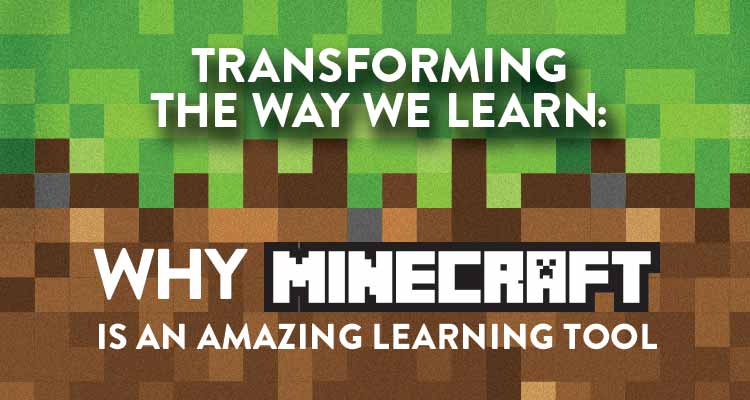Have you heard of Minecraft? If you have a gamer in the house, you may be familiar with it, as it’s one of the most popular games of all time, having sold more than 20 million copies. Considering how simple the concept is, and compared to some of the stunningly realistic visuals of many modern games, this 16-bit building game might seem like an unlikely best-seller. But in fact, gamers of all ages have been engrossed by it. The concept is simple: players build with 3D cubes (a bit like virtual LEGOs) in an infinite sandbox game world, with no specific goals or levels to beat.
Players simply explore, find natural resources, build, and craft tools. In survival mode, players need to make sure they find food and other necessities while protecting themselves from monsters. But in creative mode, the sky is the limit, with endless resources and health, no enemies, and the ability to fly freely around the game world.
It’s a fun game, and once played, it’s easy to see why it has captured the imaginations of players young and old. But it also has the potential to be an incredibly effective teaching tool. PBS’s Mike Rugnetta explains the educational possibilities for the game in this fun video from The Idea Channel.
[embedvideo id=”RI0BN5AWOe8″ website=”youtube”]
He suggests a number of ways teachers (and might I add, homeschooling parents) could utilize Minecraft-based learning to teach everything from probability and physics, to art, history, and language.
Some of Rugnetta’s ideas include teaching probability by creating a machine to randomly drop animals in the game. Or teaching history or literature by having students recreate famous architectural sites, or build sets for Shakespeare’s plays (this student recreated Shakespeare’s Globe Theatre.) On the most basic level, Minecraft’s perfectly cube-shaped blocks easily lend themselves to math discussions about volume and area.
Many teachers are already using Minecraft in their classrooms. In fact, Rugnetta estimates that 20,000 students are using the game in school in the U.S. These teachers have come up with some impressive ways of teaching students in the virtual game world. A few more of my favorite ideas are listed below.
English:
Have students write how-to guides for building structures, mining, fighting monsters, and other in-game activities.
Students can write day-in-the life journal entries about their characters, making up back stories for their characters. Who are they, and how did they end up alone in the Minecraft world?
Recreate a scene from a book using Minecraft characters and sets.
Math:
Use Minecraft for basic algebraic equations like: It takes 6 planks to make a door. If I have 60 wooden planks, how many doors can I make?
One teacher suggested having students build replicas of a historic landmark to scale. For example: this scale replica of Paris’ Arc de Triomphe de l’Etoile. Bonus: this can tie in perfectly with a history lesson!
History:
Recreate a historic event or battle using Minecraft.
Creating replicas of famous sites requires a lot of research, and as I mentioned before, a bit of math know-how to get the scale right. Here’s one student’s model of the Alamo in Texas that he created for a school history project. You can tell he did a ton of research!
This real-life class is using Minecraft to simulate humans’ progress as a civilization, from Neolithic hunter-gatherers, through the Agricultural Revolution!
Science:
Use Minecraft to learn about the periodic table of elements. This teacher explains how.
A special in-game material called redstone that is based on real-life Boolean algebra has great potential for budding engineers. By building functional in-game levers, doors, buttons, and other contraptions, players are actually learning the basics of digital circuitry!
There are many more potential learning applications; the possibilities are practically as infinite as the Minecraft world. And, as Rugnetta points out, kids respond to this kind of learning because it’s a creative, collaborative, entertaining environment where they are in control of their own challenges.
Research has shown that game-based learning can be very effectiveit’s why we integrate games and activities into the K12 curriculum and create mobile game apps. These educational games, like our xGerms app and Spell n’ Stack game, provide a fun way to practice essential skills, like math, spelling, and vocabulary.
While Minecraft is a different kind of game, open-ended and without defined goals, this kind of gaming can be as beneficial to kids as skill-based games with clear objectives. It’s a bit like the difference between organized playground games and unstructured free play. Both types of play are important for kids’ development and teach essential, albeit distinct, skills. Much like free imaginative play, Minecraft’s immersive, engaging, and improvisational environment is what gives it enormous educational potential.
Let me know in the comments: Do your kids play Minecraft? Can you imagine using Minecraft to teach a lesson? Or do you think games are better left for playtime?
Related Link:


























































